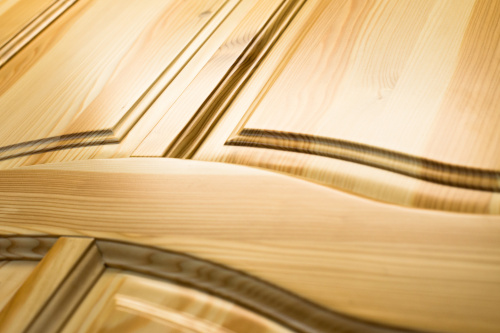First published 09/17/2019. Last updated 07/20/2023.

The world of woodworking is a field that brings both functionality and aesthetic beauty to both residential and commercial buildings. Both “architectural millwork” and “architectural woodwork,” offer options for consumers only differing in their materials. The first term incorporates laminates into the wood, whereas the latter term is usually only wood-based materials. For this post, we will focus on a larger picture of what is custom architectural millwork and its uses in buildings.
What is Architectural Millwork?
Our years of producing architectural millwork projects and continuing to hone our craft have led us to the following definition:
Architectural millwork includes every piece of visible wood when a building has been fully completed. Pieces include residential and commercial doors, cabinetry (in all rooms), paneling, shelving, stairs, and more.
If you see wood exposed in a building, what you see is the result of architectural millwork. When these components are specifically crafted for a particular building, the resulting product is custom.
Examples of Types of Architectural Millwork Pieces
Now let’s go through some examples of architectural millwork pieces in particular. These pieces may include:
- Balustrades: Fancy railings supported by decorative columns on balconies and bridges, adding safety and charm.
- Baseboards: Long boards along the bottom of walls, creating a smooth transition between walls and floors while also protecting.
- Beams: Strong wooden or metal beams that hold up roofs and upper parts of buildings, supporting the structure.
- Cabinetry: Fixed storage units with doors and drawers used for storage and style in interior design.
- Columns: Tall vertical pillars that hold up arches and other architectural elements, making things look nice and strong.
- Crown Molding: Beautiful trim running along where walls meet ceilings, adding a touch of elegance.
- Doors and Door Casings: The entrances to rooms and the frames around them, showing off the design of the building.
- Mantels: Central points above fireplaces, adding coziness and personality to a room.
- Stairways: Steps, railings, and banisters that connect different levels of a building, making it easy to move around.
If the design is unique or tailored to the building or even the specific room, you probably have a custom design. Call in professional architectural millworkers to design and install your accents for amazing pieces you can be proud of.
Ferrante Manufacturing Company has experience working in commercial and residential spaces. We always bring our varied clients the design they want to express their brand or style.
Crafting Distinctive Spaces with Custom Architectural Millwork
Elevating your building's design to new heights requires a touch of customization. Enter custom architectural millwork—a realm where design aspirations are brought to life. When standard design templates fall short of meeting your vision, turning to professional architectural millworkers can yield remarkable results.
Ferrante Manufacturing Company is a trailblazer architectural woodworking company. We boast a rich history of curating exceptional millwork experiences for both commercial and residential settings. Our team thrives on translating unique visions into tangible, awe-inspiring creations. We love elevating your space's ambiance and reflecting your brand or personal style.
To embark on a journey towards an impeccably designed space, reach out to us today. Let's bring your architectural aspirations to life through the artistry of custom woodworking.
Give us a call today at (313) 571-1111 to chat more about your unique project.
